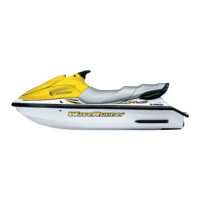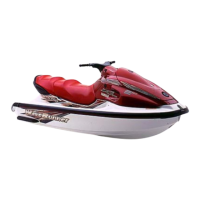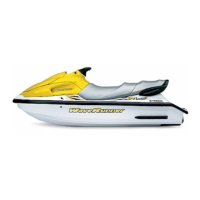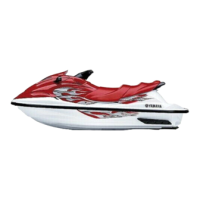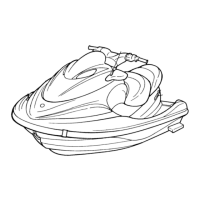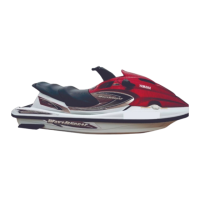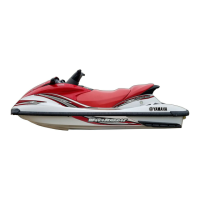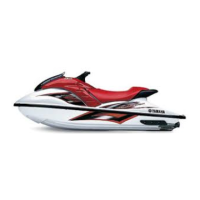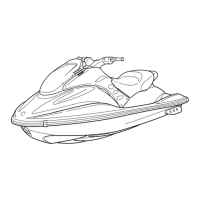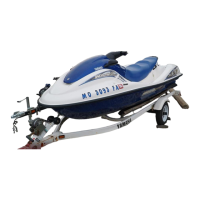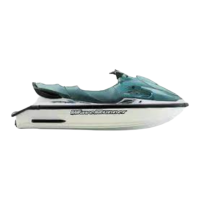Do you have a question about the Yamaha XL700 WaveRunner 2003 and is the answer not in the manual?
Defines symbols and terms like WARNING, CAUTION, and NOTE used in the manual.
Details on PRI-ID, Hull Identification Number (HIN), and engine serial numbers.
Location and types of important warning and information labels on the watercraft.
Guidelines for safe operation, including operator age and load limits.
Rules and precautions for safe cruising and avoiding hazards.
Essential gear and precautions for operating the watercraft safely.
List of essential safety and operational equipment to carry onboard.
Key operational hazards and characteristics of the watercraft.
Explanation of the watercraft's jet thrust propulsion and steering.
Safety considerations and procedures for water-skiing with the watercraft.
Navigational rules and right-of-way principles for watercraft.
Principles for right-of-way between vessels.
Guidelines for meeting, crossing, and overtaking other vessels.
Rules for narrow channels, fishing vessels, and sailing vessels.
Understanding navigational buoys and markers for safe passage.
Resources for additional boating safety education and training.
Guidelines for responsible operation and environmental courtesy.
Identification and purpose of key external and internal parts of the watercraft.
How to use key controls like seats, hood, fuel, starting, and stopping mechanisms.
Information on cooling, steering, warning lamps, grips, and safety features.
Details on front, glove, and seat storage compartments.
Information on recommended fuel types and engine oil.
List of essential checks to perform before operating the watercraft.
General guidelines and procedures for operating the watercraft.
Techniques and safety for operating the watercraft.
Essential checks to perform after operating the watercraft.
Safety precautions and procedures for transporting the watercraft.
Procedures and precautions for storing the watercraft.
Essential steps to flush the cooling system and prevent clogging.
How to lubricate engine components and cables for maintenance.
Safety and maintenance guidelines for the fuel system.
Procedures for battery maintenance, charging, and storage.
How to clean the watercraft before storage.
Overview of periodic maintenance and adjustments.
Guidelines for regular maintenance intervals and tasks.
Guidance for diagnosing and resolving common watercraft issues.
A table listing common problems, causes, and remedies.
Instructions for handling critical situations with the watercraft.
How to clear weeds or debris from the jet intake.
Procedures for jump-starting the watercraft battery.
Safety guidelines and procedures for towing the watercraft.
Steps to take if the watercraft becomes submerged.
Details of the Yamaha watercraft limited warranty coverage.
Information about Yamaha's extended service plan.
An alphabetical listing of topics and their corresponding page numbers.
| Manufacturer | Yamaha |
|---|---|
| Model | XL700 WaveRunner |
| Year | 2003 |
| Category | Boat |
| Engine Type | 2-cylinder, 2-stroke |
| Displacement | 701cc |
| Compression Ratio | 7.2:1 |
| Starting System | Electric |
| Cooling System | Water-cooled |
| Fuel Capacity | 13.2 gallons |
| Height | 41.3 inches |
| Fuel Delivery | Carburetor |
| Seating Capacity | 2 |
| Bore x Stroke | 81 x 68 mm |
